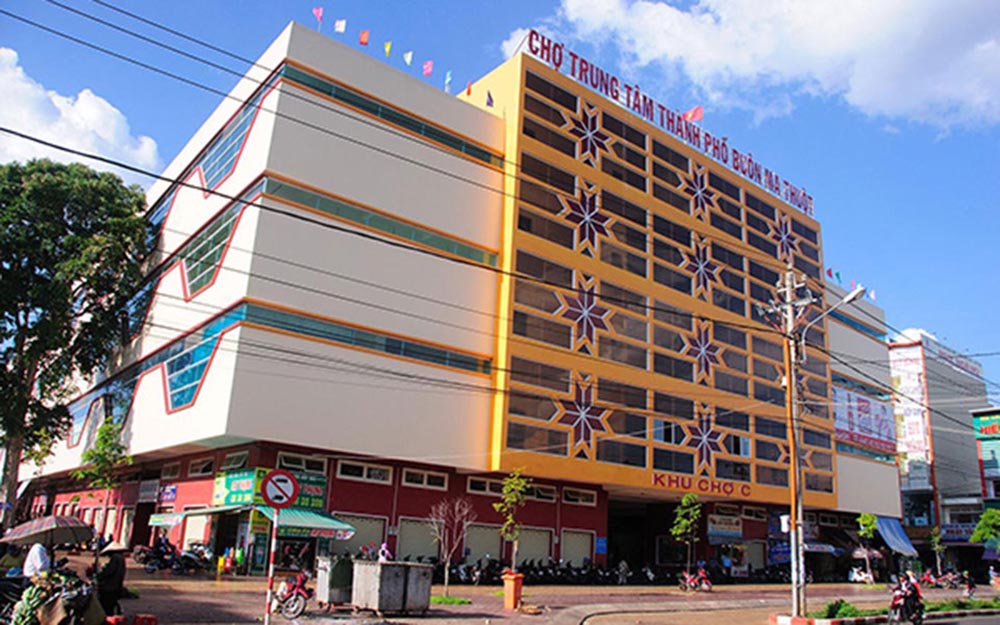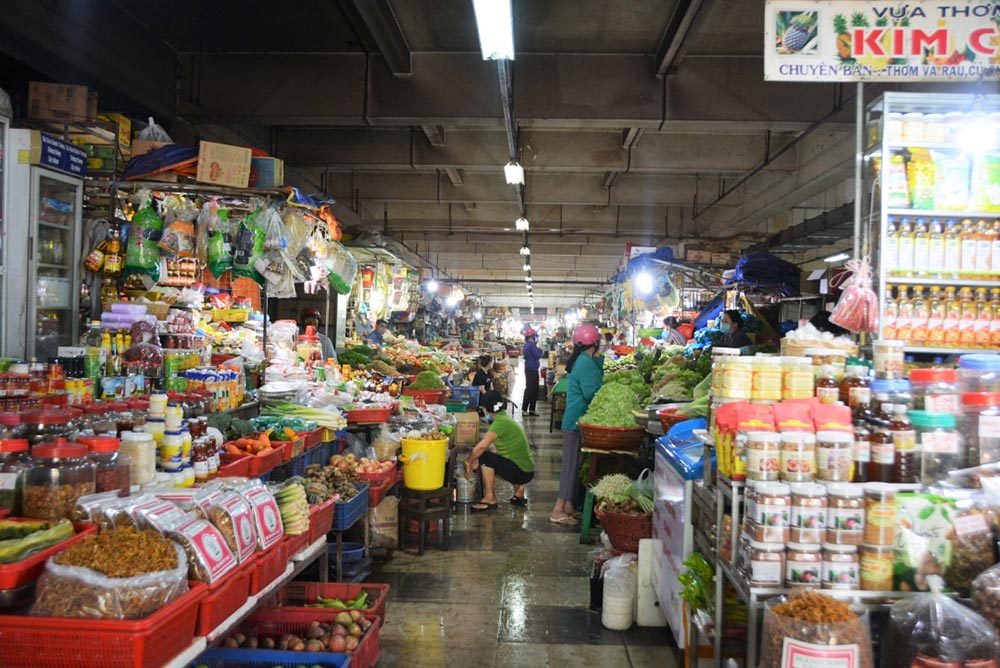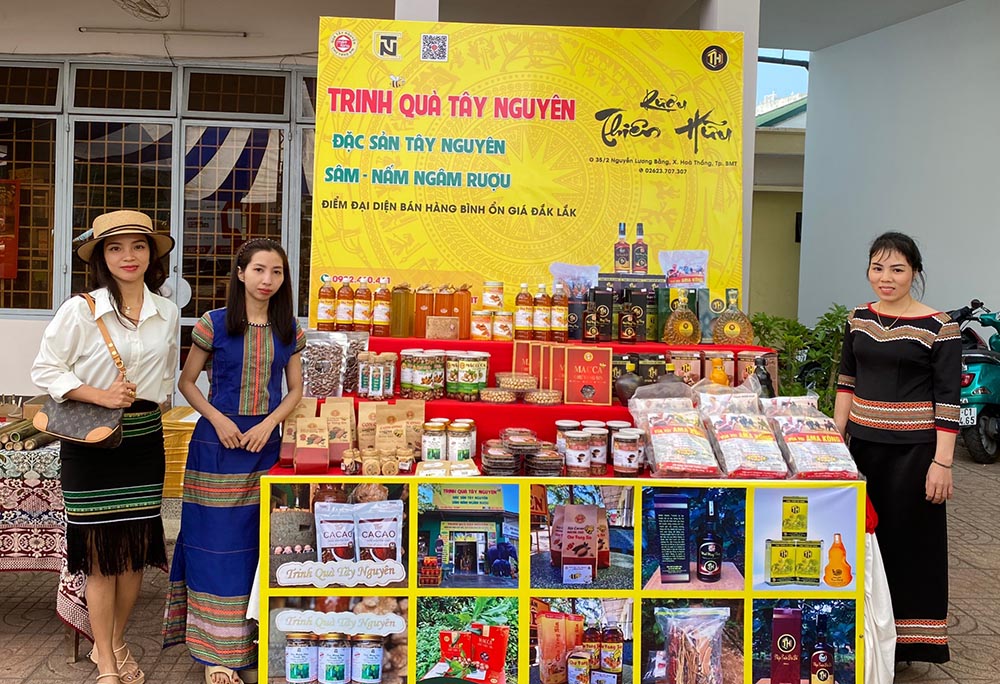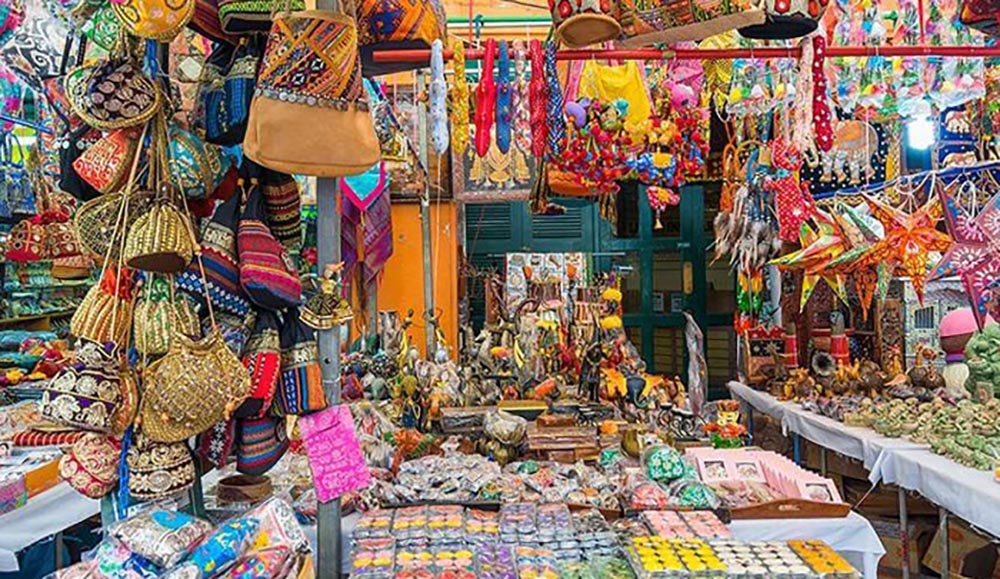Welcome to the vibrant world of Daklak’s markets, a place where local culture, diverse products, and the rich traditions of the Central Highlands meld together. Known for its picturesque landscapes and significant coffee production, Daklak serves not just as a tourist destination but as an integral part of Vietnamese commerce. The markets here are teeming with life and offer a unique glimpse into the region's cultural tapestry, showcasing everything from handicrafts to fresh produce and local delicacies. Visitors can stroll through vibrant stalls filled with artisan goods, savor delicious street food, and engage with friendly vendors eager to share their stories. Whether you are a seasoned traveler or a curious novice, Daklak’s market experience promises to be an unforgettable journey into the heart of Vietnam's rich cultural heritage.
The markets in Daklak serve as essential hubs not just for shopping, but for cultural exchange and community building. They reflect the agricultural wealth and the diverse ethnic fabric of the region, primarily composed of the Ede, Mnong, and K'Ho communities. Each market reveals something different be it the fresh produce, the elaborate handicrafts, or unique ethnic foods that represent the local lifestyles and traditions. As we delve deeper, we will explore the types of markets found here, their cultural significance, and some of the most popular market destinations, all contributing uniquely to the Daklak experience.

Daklak is home to a variety of markets that each showcase different aspects of local life. Understanding the types of markets can greatly enhance one's shopping experience in the region.
Traditional Markets: These bustling venues are perhaps the most engaging spots for any visitor. Filled with vibrant stalls, traditional markets like the Buon Ma Thuot Market offer a feast for the senses. Here, you can find everything from fresh vegetables and fruits to local meats and seafood. The array of goods often fosters a lively atmosphere, punctuated with the sounds of bargaining and laughter from locals. In these markets, the interaction with vendors adds a personal touch, allowing customers to learn more about the products and how they are made.
Types of Goods Offered:
| Typical Offerings | Description |
|---|---|
| Fresh Fruits | Including exotic varieties native to the region. |
| Local Handicrafts | Items reflecting ethnic craftsmanship. |
| Traditional Snacks | Unique snack foods available for sampling. |
Crafts and Souvenir Markets: Emphasizing the artistry of local ethnic groups, these markets present a range of handicrafts. Visitors will discover beautifully handmade textiles, ceramics, and wooden artifacts representing the unique cultural identities of the area's indigenous communities. The craftsmanship is not just a product but a narrative of the region’s heritage, making them perfect for souvenirs.
Coffee Markets: Recognized as the coffee capital of Vietnam, Daklak has specialized coffee markets that celebrate its rich coffee culture. Here, local farmers sell both roasted and unroasted beans. Visitors can taste and purchase high-quality Robusta coffee directly from the source, experiencing the depth of flavor that defines Daklak's coffee reputation.
Night Markets: As the sun sets, Daklak's night markets come alive. These vibrant venues offer street food, local crafts, and entertainment. For those seeking a lively atmosphere, the night markets allow travelers to immerse themselves in the local culture, enjoying delicious street food while soaking in the evening ambiance.
Specialty Food Markets: These markets serve as a culinary delight, showcasing local dishes and beverages. Visitors can sample exotic fruits, traps of dried goods, and even local wines.
With such a diverse selection, the markets in Daklak represent not only a shopping experience but also a deep connection to the cultural and agricultural life of the area.

The markets of Daklak are far more than just places to shop they serve as vital cultural touchpoints that reflect the region's diverse heritage. They are community centers where local customs prevail, allowing visitors to experience life as it is lived by the local population.
Community Interaction: Each market acts as a social hub where community members gather to buy and sell goods while engaging in conversation. This fosters an environment where the elderly share stories with the younger generations, aiding in the preservation of local traditions. The markets often become venues for festivals and celebrations, showcasing traditional music and dance performances that engage not only locals but also tourists.
Support for Local Economies: By patronizing these markets, visitors contribute directly to the local economy. These markets provide essential livelihoods for many families, perpetuating a cycle of cultural preservation through craftsmanship and traditional practices. For example, industries like weaving or pottery, which are significant in the cultural landscape of Daklak, see continued engagement through market interactions.
Cultural Exchange: Markets also serve as platforms for cultural exchange. For instance, when visitors interact with local artisans who produce unique handicrafts, they learn about the stories, techniques, and history behind these items. This not only enriches the tourist experience but also instills a greater appreciation of local customs and traditions.
Highlighting Agricultural Richness: The diversity of products available in Daklak’s markets revolves around its rich agricultural land. From coffee to fruits and vegetables, these products signify the hard work and dedication of local farmers. The presence of organic and specialty items also indicates a focus on sustainable practices, reflecting changing consumer preferences towards quality and sustainability.
In summary, the cultural significance of Daklak's markets cannot be understated. They form the backbone of the community, acting as both economic engines and cultural landmarks that engage all who visit.
When it comes to visiting Daklak, several markets stand out as must-visit destinations for travelers seeking to engage with the region’s charm and local culture.
Buon Ma Thuot Market: Arguably the crown jewel of Daklak’s markets, Buon Ma Thuot Market is the largest and most diverse. Here, vendors hawk a wide array of goods including fresh produce, local art, and of course, renowned coffee. The atmosphere is electric, with locals bustling about, eager to get their daily goods. An added value is the local delicacies available for sampling, making this market a sensory delight.
Special Features:
| Unique Offerings | Description |
|---|---|
| Specialty Coffee | Locally sourced Robusta beans. |
| Handcrafted Goods | Products from local artisans reflecting ethnic styles. |
Lak Lake Market: Nestled near the scenic Lak Lake, this market specializes in fresh lake fish, traditional cuisine, and handmade crafts. Visitors will find the atmosphere unique, often enhanced by the beauty of the surrounding landscapes. The stories shared by vendors here add depth, providing insights into the lifestyles of various ethnic groups residing around the lake.
Don Village Market: Known for its connection to the indigenous Ede people, Don Village Market showcases traditional crafts and cultural experiences unique to this group. The presence of elephants and the tradition of elephant taming offer a fascinating glimpse into the local way of life, making it not just a shopping destination but a cultural experience.
Night Markets of Buon Ma Thuot: These lively markets are alive with the buzz of night-time food stalls, local handicrafts, and entertainment. Visitors can enjoy local delicacies such as grilled meats and fresh seafood while experiencing the nightlife of Daklak. The vibrant atmosphere makes it an attractive spot for both locals and tourists alike.
In summary, the markets of Daklak provide unique opportunities for exploring the local culture and procuring one-of-a-kind products. From the bustling Buon Ma Thuot Market to the picturesque Lak Lake Market, each venue offers insights into the cultural heritage and daily life of the people of Daklak.

Shopping in Daklak is not merely a transaction; it's an experience steeped in culture and community. Markets such as Buon Ma Thuot not only showcase an array of products but also provide opportunities for engagement with local traditions and lifestyles.
Engaging with Local Vendors: One of the distinctive features of shopping in Daklak markets is the chance to interact directly with vendors. Unlike the impersonal nature of large retail chains, market interactions often come with friendly smiles and stories. Vendors are more than just sellers; they offer firsthand tales of the products they sell, particularly in the crafts and food sectors.
Sampling Local Flavors: The opportunity to taste local cuisine is a significant draw for visitors. Markets are filled with food stalls where people can sample authentic dishes like red vermicelli or Com Lam, providing a culinary journey that connects visitors to the region.
Bargaining and Haggling: Shopping etiquette in Daklak includes an element of haggling, allowing shoppers to negotiate prices. This cultural practice not only adds excitement to the shopping experience but also fosters connections between buyers and sellers.
Cultural Immersion: The vibrant atmosphere of the markets allows visitors to immerse themselves into the local culture fully. The intertwining of sounds, sights, and scents creates a sensory overload yet a delightful one that captures the essence of Daklak.
Supporting Sustainability: By choosing to shop in local markets, visitors help support sustainable practices and contribute to preserving traditional lifestyles, which can often be threatened by modernization. Products are often sourced from local farmers and artisans, promoting environmentally friendly practices.
In conclusion, shopping in Daklak transforms into a culturally rich adventure that connects commerce with personal encounters, delicious food, and historical narratives embedded in the products available.
Daklak is a treasure trove of unique products that serve as ideal souvenirs and represent the region's flavor and culture. Here are some of the most noteworthy items to seek out:
Local Coffee: Single-origin Robusta coffee, which is highly sought after, stands out as Daklak’s signature offering. Many stalls in the markets offer freshly roasted beans, which can be purchased whole or ground. This coffee reflects the volcanic soil quality of the region, providing a rich and robust flavor that's distinctive to Daklak.
Handcrafted Textiles: Each ethnic group in Daklak has its own textile traditions, often featuring vibrant colors and intricate designs. Traditional textiles, whether in the form of scarves, bags, or garments, provide a connection to the region's artisans and their stories.
| Description | Characteristics |
|---|---|
| Traditional Scarves | Woven with ethnic patterns and bright colors. |
| Ethnic Jewelry | Unique designs symbolizing local culture. |
Dried Fruits and Local Snacks: The province is known for its array of dried fruits, often sold at market stalls. These snacks serve as not only delicious munchies but also a taste of the local produce that reflects Daklak’s agricultural strength.
Wooden Crafts: Intricately carved wooden artifacts are a testament to the skilled craftsmanship of local artisans. From functional items to decorative pieces, these creations make great gifts for friends and family back home.
Local Wines and Honey: Visitors should not miss the opportunity to sample and purchase local wines made from indigenous ingredients, alongside natural wild honey sourced from the forests of Daklak.
In a nutshell, Daklak’s markets offer a curated collection of products that encapsulate the essence of the region strong flavors, vibrant textiles, and rich cultural narratives.
Choosing souvenirs from Daklak markets adds an element of personal connection to each purchase. Here are some of the best souvenirs to look for, each representing the essence of Daklak:
Coffee Products: Robust coffee beans from Daklak are arguably the most popular souvenir. Known for being some of the finest in Vietnam, they encapsulate the rich agricultural heritage of the region.
Wooden Handicrafts: These crafts include decorative items and functional pieces created from local woods. Each item tells a story of local artisanship and presents a unique touch of Daklak culture.
Brocade Textiles: The stunning fabrics woven by local ethnic groups not only serve as reminders of your visit but also support traditional craftsmanship. Scarves, bags, and decorative items made from these textiles are beautiful keepsakes.
Traditional Foods: Dried bamboo shoots and beef jerky are beloved snacks that encapsulate the flavor of Daklak. These can be enjoyed at home and serve as a flavorful reminder of your trip.
Local Delicacies: Consider bringing home local specialties such as wild honey or packaged traditional snacks. These help to recreate the tastes of Daklak wherever you go.
In summary, souvenirs from Daklak serve not just as reminders of your journey, but as connections to the local culture, lifestyle, and the exceptional artistry of the region.

Food plays a vital role in Daklak’s market scene, providing an opportunity to indulge in local culinary delights. Here are some specialties to explore:
Red Vermicelli: This distinctive dish features a red broth and is often served with various meats and toppings. Vendors at the markets frequently offer this dish, allowing diners to sample a unique local flavor.
| Ingredients | Description |
|---|---|
| Vermicelli | A staple noodle used in various Vietnamese dishes. |
| Red broth | Special sauce made with local spices. |
Com Lam (Bamboo Tube Rice): Guests will find glutinous rice roasted inside bamboo tubes, giving it a unique smoky flavor. Accompanied by savory grilled meats and nuts, it’s a must-try at food stalls.
Thut Soup: A traditional dish made by the Mnong people, it incorporates native vegetables and herbs, reflecting the area’s rich flora. This soup is not only delicious but offers an authentic taste of the region’s culinary history.
Wild Honey and Leaf Soup: Wild honey harvested from the local forests is known for its unique sweetness. Likewise, the leaf hotpot, made from various forest leaves, showcases the biodiversity of Daklak’s agricultural practices.
Local Snacks: The markets also offer various traditional snacks, perfect for sampling while exploring or for taking home as edible mementos of your experience in Daklak.
In essence, the flavors of Daklak’s markets provide a culinary map of the region, allowing visitors to savor the local culinary treats that encapsulate its heritage.
The shopping landscape in Daklak features a distinctive blend of culture and commerce that sets it apart from other regional markets in Vietnam. Each type of market plays a unique role in this ecosystem, enriching the shopper's experience.
Local Product Emphasis: Daklak markets predominantly feature local goods, especially coffee and agricultural products unique to the region. This focus resonates strongly with visitors who appreciate direct connections to local producers and the stories behind their goods.
Authentic Experience: The markets here maintain a vibrant, authentic atmosphere that allows for deeper engagement and interaction with local vendors. This contrasts with larger urban markets, where the experience may become more commercialized and impersonal.
Cultural Events: Daklak’s markets often serve as venues for cultural events that showcase local music, dance, and special festivities. This cultural layer enhances the shopping experience, fostering a greater appreciation for the region's traditions compared to others that may lack such elements.
Comparison with Larger Markets: Markets in major cities, such as those in Ho Chi Minh City or Hanoi, are often known for their vast variety of goods, including imported products. In contrast, Daklak markets focus on local specialties, emphasizing sustainability and cultural significance.
Diversity of Ethnic Groups: The presence of various ethnic groups in Daklak adds a distinct flavor to the markets, each contributing their practices, products, and stories. This contrasts with more homogeneous markets in other regions, showcasing a vibrant mosaic of cultures.
In conclusion, Daklak’s markets exemplify an interconnected relationship between agriculture, commerce, and cultural heritage, providing a shopping experience rich in authenticity and local flavor unlike any other.
When drawing comparisons between Daklak markets and those found in other regions of Vietnam, several key differences emerge, contributing to the unique identity of Dalak's marketplace experience.
Focus on Coffee Production: Daklak stands out due to its place as the coffee capital of Vietnam. Markets here prominently feature a wide variety of high-quality Robusta coffee products, while other regions may focus more on different agricultural products or crafts.
Less Commercialization: Markets in Daklak maintain a degree of authenticity that larger urban markets often lack. Where many cities focus on mass commercialization, Daklak’s markets prioritize local engagement and sustaining traditional practices, offering visitors a more genuine taste of local life.
| Daklak Markets | Other Regional Markets |
|---|---|
| Strong emphasis on local coffee | Broader variety of consumer goods |
| Cultural events regularly present | Less focus on local art and culture |
Cultural Emphasis: While some markets in major cities tend to gravitate towards international goods, Daklak markets frequently showcase local crafts and ethnic foods that highlight the area's rich cultural tapestry. Ethnic groups in Daklak contribute to this by providing products that reflect their unique traditions and lifestyles.
Visitor Engagement: The shopping experience in Daklak permits deeper interactions with local vendors, allowing visitors to hear stories about their crafts and food. This contrasts with larger markets, where interactions may feel rushed or transactional due to the high volume of customers.
Tourism Development: In more urbanized regions such as Ho Chi Minh City, markets cater heavily to tourists, whereas markets in Daklak focus on meeting the needs of locals while also welcoming visitors. This local focus assures that guests will experience the lifestyle of residents, making every visit a unique and culturally enriching experience.
In essence, Daklak markets carve a niche for themselves as compassionate cultural hubs that coexist with modernity while staunchly preserving their traditions.
The contrast between traditional markets and modern shopping centers in Daklak provides an intriguing look at consumer behavior, local customs, and economic trends. Each serves a different purpose in the fabric of local life.
Cultural Essence: Traditional markets are characterized by their role in social interactions and cultural identity. They are gathering points for the community, where locals come not only for shopping but for socializing and cultural exchange. In contrast, modern shopping centers tend to prioritize convenience, often losing the cultural authenticity found in traditional venues.
Convenience vs. Experience: Modern shopping centers excel in providing a one-stop shopping experience with amenities like parking, air conditioning, and a broader range of international brands. However, they lack the personal touch that comes with shopping in traditional markets where personal relationships with vendors flourish.
| Traditional Markets | Modern Shopping Centers |
|---|---|
| Focus on local products and crafts | Wider variety of branded goods |
| Engaging with local culture | Primarily commercial focus |
Supporting Local Economy: Traditional markets play a vital role in sustaining local economies and encouraging sustainability. They support local artisans and farmers, whereas modern centers may divert economic benefits to larger corporations or franchises. This can create disparity in economic reinforcement of community versus commercialization.
Consumer Preferences: Younger generations in Daklak may gravitate towards the variety and convenience offered by modern shopping centers. However, aged consumers often prefer traditional markets for their personal relationships and quality goods. This generational divide speaks to broader trends in consumer behavior.
Future Trends: As modernization increases, traditional markets may need to adapt by integrating improved hygiene and organization while maintaining their cultural roots. Conversely, modern centers could benefit from embracing local cultural elements, presenting a more inclusive shopping experience.
This ongoing dialogue between traditional markets and modern shopping centers in Daklak illustrates the complexities of consumer demands in an evolving market landscape, highlighting both the cultural significance and economic implications inherent to each.
In summary, Daklak's markets represent a microcosm of the region's rich cultural heritage, agricultural bounty, and community life. They are not simply places to shop but vibrant spaces where stories, traditions, and local flavors intersect, making them essential to understanding the local way of life. From traditional markets bustling with energy to the quiet contemplation of artisan shops, each stall and vendor tells a tale, inviting visitors to partake in the authenticity of Daklak. As modernization presents new challenges and opportunities, it is crucial to honor and preserve these unique cultural touchpoints, ensuring they remain vibrant and relevant for future generations. Whether you are a local or a visitor, Daklak’s markets offer an experience that is as enriching as it is enjoyable, leaving a lasting impact long after the shopping bags have been tucked away.